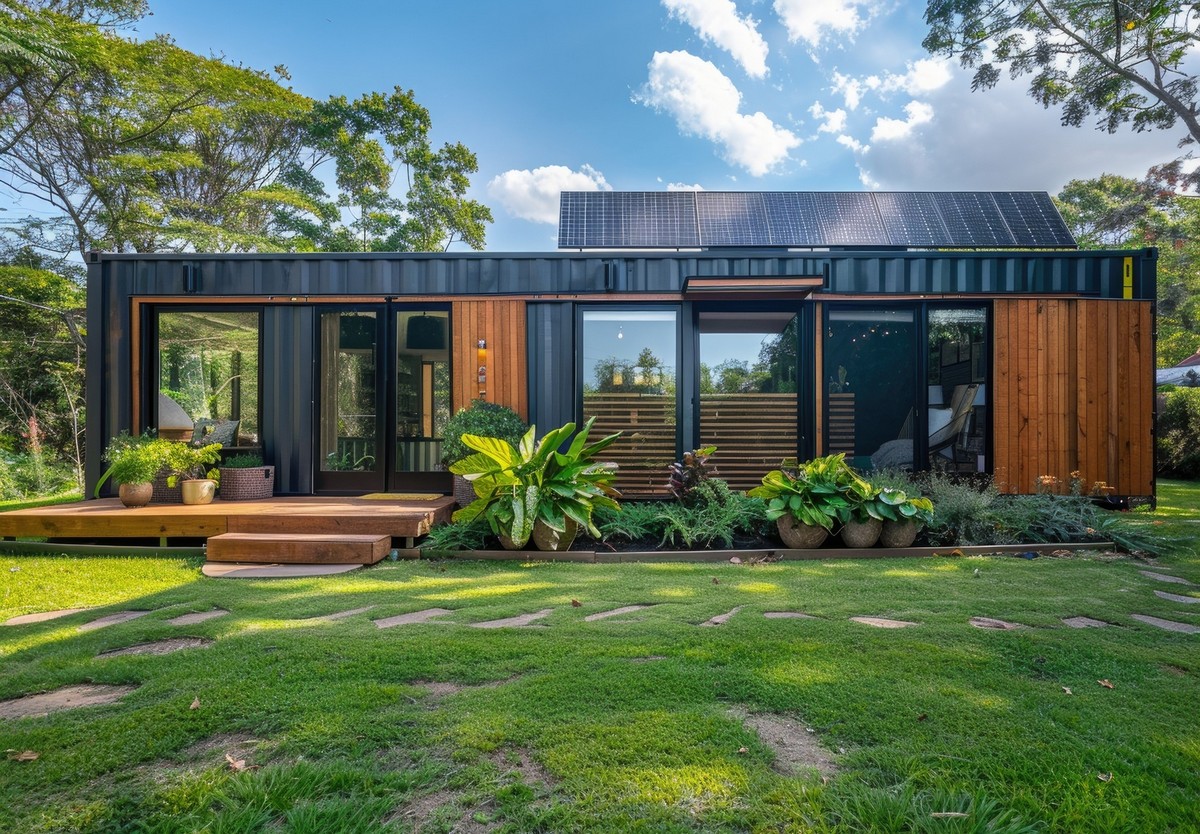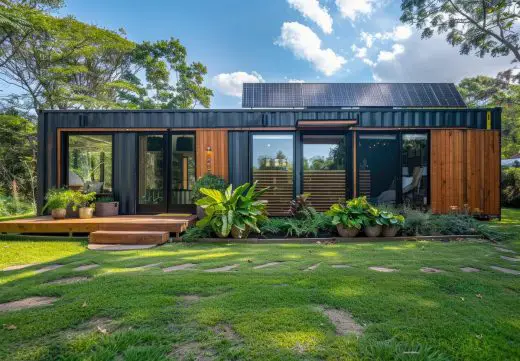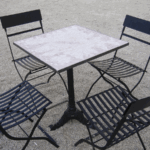Blending indoor and outdoor spaces in container homes, Prefab property advice
Blending Indoor and Outdoor Spaces in Container Homes
7 August 2024
Container homes have transformed from industrial shipping vessels to modern, sustainable living spaces. Their popularity has surged due to their affordability, durability, and eco-friendly nature. These steel structures offer a unique canvas for homeowners to create stylish and functional living environments.
One of the most captivating aspects of container homes is the ability to seamlessly blend indoor and outdoor spaces. This article will explore design strategies and practical tips to maximize your container home’s potential, creating a harmonious connection between interior and exterior living.
Design Principles for Seamless Integration
To successfully blend indoor and outdoor living in a container home, consider a few fundamental design principles.
Open Floor Plans
Open floor plans are key to creating a fluid flow between interior and exterior spaces. By removing walls and incorporating wide doorways or sliding glass panels, you can seamlessly connect your living, dining, and kitchen areas to your outdoor patio or deck. This design strategy not only enhances the sense of spaciousness but also maximizes natural light and ventilation.
Use of Glass and Large Windows
To further blur the lines between indoors and out, prioritize the use of glass and large windows. Expansive glass walls, as often featured in designs by Custom Container Living and other reputable builders, are ideal for bringing the outdoors in. Picture waking up to a breathtaking view of your garden or enjoying a morning coffee while surrounded by lush greenery. These natural elements can significantly improve your overall well-being and create a serene atmosphere.
Indoor-Outdoor Flooring Continuity
Maintaining consistency in flooring materials can also contribute to a seamless indoor-outdoor experience. Consider extending your interior flooring, such as hardwood or tile, onto your outdoor living area. This cohesive approach creates a visual flow and reinforces the connection between the two spaces. For instance, using the same porcelain tiles indoors and outdoors can create a sophisticated and unified look.
Incorporating these design principles into your container home allows you to seamlessly blend indoor and outdoor living. This creates a harmonious and inviting space perfect for relaxation and entertainment.
Practical Features to Incorporate
To truly maximize the indoor-outdoor connection in your container home, consider incorporating practical features that enhance your living experience.
Decks
Versatility: Decks can be designed in various sizes and shapes to accommodate your needs. From small, intimate spaces to expansive entertainment areas, the possibilities are endless.
Material Options: While traditional wood decking is popular, low-maintenance materials like composite decking have gained significant popularity. Composite decking is engineered to resist fading, staining, mold, and mildew, requiring minimal upkeep while maintaining a natural wood appearance.
Patios
Customization: Patios offer a high degree of customization in terms of materials, patterns, and designs. You can choose from concrete pavers, natural stone, brick, or even tile to create a unique look.
Low Maintenance: Similar to decks, concrete pavers and other durable materials require minimal maintenance, making them ideal for busy homeowners.
Indoor Greenery
Vertical Gardens: These space-saving solutions are perfect for container homes with limited floor space. Vertical gardens can be created using living walls, hanging planters, or tiered shelves.
Potted Plants: Add life to your interior with strategically placed potted plants. Consider different sizes, shapes, and varieties to create visual interest.
Indoor Herb Gardens: Grow fresh herbs indoors for cooking and enjoying their aromatic qualities. Place them on windowsills or kitchen countertops for easy access.
Outdoor Oasis
Rooftop Gardens: If your container home has a roof, consider transforming it into a lush garden retreat. Enjoy stunning views while cultivating your own plants and flowers.
Landscaping and Seating: Create inviting outdoor spaces with comfortable seating arrangements, lush landscaping, and decorative elements. Incorporate plants that thrive in your climate for low-maintenance beauty.
Water Features: Add a soothing element to your outdoor space with a small water feature, such as a fountain or pond. The sound of running water can create a relaxing ambiance.
Sliding and Folding Doors
Sliding and folding doors are essential for seamlessly transitioning between indoor and outdoor spaces. These doors create large openings that can be fully retracted, effectively merging your interior with your exterior environment. Consider glass panels for maximum light and visibility. For instance, installing bi-fold doors that open onto a patio can transform your living room into an extension of your garden during warmer months.
Remember, the key to successful indoor-outdoor living is to prioritize functionality and comfort. Carefully selecting features that complement your lifestyle and preferences can transform your container home into a haven.
Your Container Oasis
Container homes offer a unique opportunity to create seamless indoor-outdoor living spaces. By carefully considering design principles, practical features, and personal preferences, you can transform your container home into a haven that effortlessly blends comfort and nature. Embrace the possibilities and enjoy the benefits of a harmonious living experience.
Comments on this Guide to Blending Indoor and Outdoor Spaces in Container Homes article are welcome.
Shipping Container Buildings
Modular Posts
Building a new home? Custom vs Modular
Modular building like a shipping container cafe
Home Articles
Residential Architecture
Comments / photos for the Blending Indoor and Outdoor Spaces in Container Homes page welcome




